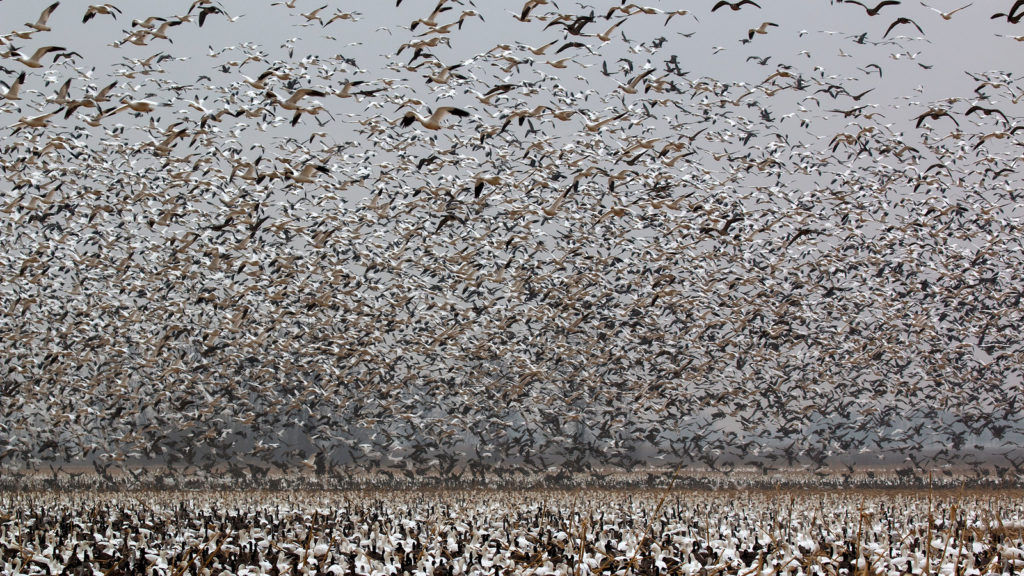But ask now the beasts, and they shall teach thee; and the fowls of the air, and they shall tell thee: Or speak to the earth, and it shall teach thee: and the fishes of the sea shall declare unto thee. Who knoweth not in all these that the hand of the Lord hath wrought this? In whose hand is the soul of every living thing, and the breath of all mankind. Job: 12:7

It’s only in the last few years that Bald Eagles have returned from a long absence to nest in the foothills and around the lakes and reservoirs of the northern San Joaquin Valley. Increasingly common, sightings of our majestic national symbol still fill people with admiration and awe; it’s easy to forget how close the eagles came to extinction—the once widespread raptors almost disappeared from the lower forty-eight states only a few decades ago.
Bald Eagles were placed on the endangered species list in 1973, at the same time as the passage of the Endangered Species Act. Their decline was traced to reproductive failure caused by a residue from DDT. Once DDT was banned, the eagles began a long period of recovery.
In part because of successful efforts with popular birds like the Bald Eagle, and despite a decades-long, multi-million dollar effort to repeal it, the Endangered Species Act (ESA) has remained one of the most popular government programs ever established. When it was passed, bipartisan support for the ESA was overwhelming; the vote in Congress was 482-12 in favor of saving our nation’s threatened wildlife heritage.
More recently, conservation reports reveal public support for the ESA has remained as high as 80% throughout the almost fifty years of its existence. In addition to the Bald Eagle, the ESA has protected over 2300 species, subspecies and distinct populations since enactment.
One of the most successful recoveries has been in Stanislaus County, where the formerly endangered Aleutian Canada Goose recovered from a low of under six-hundred individuals in the 1980s to a population now estimated at almost 200,000.
A close relative of the diminutive Cackling Goose, and most easily distinguished by the white collar at the base of its neck, Aleutian Geese were threatened both by predatory Arctic Foxes on their northern nesting grounds in the Aleutian Islands and proposed development on their wintering grounds.
The foxes were introduced to the Aleutian Islands by Russian fur traders. Aleutian Goose wintering grounds in the 1980s were almost solely limited to farm and ranchlands between the confluences of the Tuolumne, San Joaquin and Stanislaus Rivers in western Stanislaus County.
Though the wintering grounds were ultimately saved by a remarkable effort involving the National Audubon Society, private landowners, and the U.S. Fish and Wildlife Service, the major factor in their protection was the Endangered Species Act; it provided legal justification for protecting the birds’ habitat. With their wintering grounds safe, the geese began a steady recovery when the last of the Arctic Foxes were removed from their nesting grounds.
Today, the spectacular overflights of wintering Aleutian Geese have been joined by a multitude of other species, including Snow and Ross’s Geese, Canada Geese, and White-fronted Geese, as well as numerous species of ducks. The waterfowl are attracted to the San Joaquin River National Wildlife Refuge, which was established to provide habitat for the endangered Geese and associated wildlife.
In addition to protection afforded by the Endangered Species Act, Bald Eagles and Aleutian Geese until recently were protected by the Migratory Bird Treaty Act. Now, both the Migratory Bird Treaty Act (MBTA) and Endangered Species Act have been undermined by revisions ordered by the Trump administration. Essentially a gutting of both acts, the revisions mark a tragic comedown for a party once proud to claim the legacy of Republican Theodore Roosevelt.
Roosevelt helped establish 230 million acres of public lands during his presidency, including 150 million acres of national forest. Under Trump, the nation’s public heritage is under an unprecedented assault, as more and more public lands have been opened up for exploitation by private enterprise, especially the fossil fuel industry.
But the new Republican Party isn’t just assaulting America’s public heritage, it’s also attacking science and democratic principles. Government science reports on topics ranging from climate change to adverse effects of drilling for oil in the Arctic have been suppressed, censored, redacted and revised under Trump. Even a ban on chlorpyrifos, a pesticide shown conclusively to retard brain development in young children, was lifted by the EPA after pressure from the chemicals industry.*
Revisions to the Migratory Bird Treaty Act and Endangered Species Act aren’t just about wildlife. They’re also about lifting restrictions on the wholesale destruction of public lands. They’re about drilling and fracking and poisoning the environment.
Few places in the United States are as vulnerable to destructive exploitation as California’s San Joaquin Valley. The U.S. Geological Survey has written that the Valley contains, “one of the single largest alterations of the land surface attributed to humankind.” Over 5,200 square miles of irrigation land have subsided at least a foot since the introduction of irrigated farming; some places have subsided well over twenty feet.
Over 95% of the Valley’s native wetlands and riparian forests, the kinds of places that harbor wintering ducks, geese, and swans, have already been lost to urban and agricultural development. Imagine what could happen to the remainder without the protection of the ESA and MBTA.
Fortunately, California state authorities are pushing back against the assault on wildlife. In addition to joining other states in litigation against changes to federal protection for migratory birds and endangered species, California legislators have established new state guidelines that preserve the spirit and purpose of the MBTA.
But even with resistance from the state, the Valley continues to face threats of environmental degradation posed by the Trump administration. Last fall, federal officials began attempts to open 1.6 million California acres for drilling and fracking, with much of that acreage located in the southern San Joaquin Valley.

Fracking can contaminate groundwater and increase the probability of earthquakes, while continued use of fossil fuels threatens to accelerate climate change, already coming on almost too fast to reverse.
None of this matters to the new Party of Trump, but when the history of the Trump era is written, it will note that among the most singular achievements of a president who lost the popular vote has been his ability to enact and enforce policies the vast majority of U.S. citizens oppose. In attacking the nation’s natural resources and native wildlife, the Trump administration has established a new tyranny of the minority—not just a threat to nature itself, but to majority rule, a fundamental tenet of democratic societies everywhere.
“Every time we turn our heads the other way when we see the law flouted, when we tolerate what we know to be wrong, when we close our eyes and ears to the corrupt because we are too busy or too frightened, when we fail to speak up and speak out, we strike a blow against freedom and decency and justice.”
― Robert F. Kennedy
*The State of California has extended the ban on Chlorpyrifos



Good job!
Well stated, Eric and such magnificent photos. Will share on personal Facebook page and hope it’s shared further as we are at a crisis point environmentally, economically and existentially given the idiots at the helm right now.
“Anybody but Trump – 2020!”
Mr. Caine, your breathlessly laudatory rhetoric hailing the Endangered Species Act is predictable. Your equally breathless condemnation of the Trump Administration for even deigning to modify the Act is also predictable.
But it would be good to insert facts–not just emotion–into the conversation.
To wit:
* Since its inception in 1973, less than 2% of the 2400 species named as endangered or threatened have been removed from the list. That is, by any measure, a deplorable failure.
* Over that same period, environmentalists have successfully destroyed local economies while creating a cottage industry that enriches environmental lawyers while doing little to protect species (see above). Need an example? The timber industry in western Oregon is a shell of itself, thanks to the protection of the spotted owl. And how has the species done since it was declared endangered? According to the Oregon Department of Forestry, the population in central Oregon has decreased from 208 in 1992 to 187 in 2017. On the Oregon coast, the population has decreased from 236 to 124 over the same period.
* The U.S. Fish & Wildlife Service no longer even adheres to the law as it was written. Instead of relying on science to inform its decisions, FWS deploys feeble standards such as “best professional judgment”. Need an example? Look at FWS ruling to list the Atlantic sturgeon. They did so without even bothering to count the existing population. It was their “best professional judgment” that the species was endangered. If conservatives deployed this kind of tactic to skirt the law, you would be howling–and you know it.
* Examples of gross overreach by the environmentalists abound, but one of the most grievous examples is FWS’ attempt at the taking of 1,500 acres of land in Louisiana declared “critical habitat” for the dusky gopher frog. There were just two problems: the frog had not been seen in the area in more than 50 years, and even if it was there, it could not survive on the land as is without clearing the forest canopy. And guess what? The Supreme Court earlier this year–in an 8-0 vote (including all of the liberal justices)–ruled against FWS and environmentalist overreach. In the written opinion, Chief Justice Roberts cynically wrote, “according to the understanding of how adjectives work, ‘critical habitat’ must also be ‘habitat'”–and the fact that the 1500 acres was not even habitat for the frog was FWS’ ultimate undoing.
* When environmentalists decide they want to take private land, all they have to do is find a species to name under the ESA. It is a common tactic, no matter how damaging to other species or even non-existent the species might be (see above for an example).
As to your assertion that Trump is ravaging the environment, I would like to ask this: name a species which is suddenly threatened at the hand of the Trump Administration, and produce the numbers, not just the emotions.
Regarding the specific actions of the Trump Administration, I offer this quote from the Wall Street Journal: “Interior is accused of ravaging the planet for removing language in a regulation that says listings must be made “without reference to possible economic” consequences. The law still says that listings must be made based solely on the scientific evidence. It isn’t an assault on animals to inform the public of the trade-offs a society may make when protecting wildlife. It’s a basic tenet of transparent government.”
So while you may continue to hear harps playing in the background of your unqualified praise of the ESA, just know that I can produce scores of other examples demonstrating how the liberal elite in this country have used ESA as a sledge hammer to dismantle private property rights and skirt the law.
The Administration’s change of regulation is both reasonable and modest. And the hue and cry from you and your environmentalist big-government advocates is both frenetic and predictably unhinged.
Mr. Barton: You’re confusing isolated examples with norms, a tactic you likely picked up from the talk-show hosts you mimic. Such swindles were old in the time of ancient Greece, though they still excite people whose reality is determined by radio and television broadcasts. For every example you offer of abuse of the ESA, I can offer several examples of abuse by private enterprise. Timber companies? How about clear-cutting, fouling rivers and streams, and subjecting workers to a hazardous workplace? How about selling raw timber to China so as to avoid milling costs in the USA? How about a continuous downsizing of the labor force? I could on, but there is too little benefit from addressing your deflections and distractions. The point you insist on avoiding is that we are a democratic republic and the ultimate power in this nation resides in the people. And the people do not want our public heritage of nature and wildlife destroyed by the rapacious greed of a few lawless opportunists who have arbitrarily decided the world is theirs for the taking. It’s that simple. As for species imperiled by opening up public lands to exploitation by private enterprise, there are many, but the Sage Grouse springs immediately to mind. More to the point, and as Dr. Anderson makes clear, humankind itself is imperiled by pollution, and most especially by continued consumption of fossil fuels, which is what opening these lands for exploitation is all about. Continue to flout science, law, and reason as much as you wish; it won’t change the fact we are a democratic republic where power resides in the people, not a criminal oligarchy like Putin’s Russia, not a feudal system, not a plutocracy. And the people are coming Mr. Barton. In 2020, we rise.
It might surprise you, Mr. Caine, to know that I did not vote for Trump nor plan to vote for him in 2020. So I am no apologist for the President. But the many examples I offered are far from “isolated”. They are picked right out of the environmentalists’ playbook, and that playbook is used over and over and over.
It’s interesting that my numerous examples are considered “deflections and distractions”, while your examples are undoubtedly erudite and unimpeachable. Even the one example you offer in your rebuttal–the sage grouse–was not listed as endangered by the Obama Administration. Oh my…that is problematic. You can’t even blame Trump for that one.
One last comment: what does it mean when you say “the people are coming, Mr. Barton”. Last I checked, you and I are both voting citizens. Or do I not count since I don’t blindly agree with every left-wing cause you choose to champion?
Mr. Barton: It is difficult to have a civil discussion with people who can’t or won’t follow the threads of their own comments. You did not ask what species were put on the endangered list because of Trump’s policies, you asked to name a species “which is suddenly threatened at the hand of the Trump Administration” (sic). One such species, according to expert opinion, is the Sage Grouse. I’ve always wondered whether people like you intentionally violate the rules of civil discourse or just don’t know them. As for the environmentalists’ playbook, I’d love to own a copy. Do you have title and author? ISBN? For someone who didn’t vote for Trump, you spend an inordinate amount of time defending his policies. Maybe that’s because you are such a stickler for democratic principles. As for “left-wing” causes, it was Republican Teddy Roosevelt who championed preservation of public lands, and Republican Richard Nixon who signed into law the Endangered Species Act, which was supported overwhelmingly by both our nation’s political parties. These “left-wing” causes have become “left-wing” only because of a concerted (and expensive) propaganda campaign by the very wealthiest among us. And it was Republican Dwight David Eisenhower who warned us all against the malign but powerful influences of the military/industrial complex. Unfortunately, too many of us don’t know our own history, and even more of us refuse to learn it.
Hmmmmmm…. Mr. Barton, I am neither a liberal nor a person immune to facts and I find your comments specious, self-serving and, for the most part, inaccurate and as a now former Republican, I cannot find anything laudable about the Trump Administration’s actions on just about anything, so I suppose you’d like to call people like me names also??? There is one thing I have no question about: some future day when you no longer tread this planet’s surface, you’ll not likely “hear harps playing in the background” but rather the crackling of fire as you pass through the gates of hell where folks who failed in their stewardship of The Earth will be warmly welcomed.
Eric Caine:
It seems clear that our current president is willing to sacrifice anything to free-up Ike Eisenhower’s “military industrial complex.” So I think your criticism is legitimate.
Some folks may want to ignore all the good that has resulted from species protection, and the accompanying habitat protection that has come with it. The tight regulations of the 1970s to protect air, water, and species were so very needed. Uncontrolled extrapolation of the water, air and environmental policies of the 1950s and early ’60s would have by now made many parts of the US unlivable, think Los Angeles Basin; Cuyahoga River, Kentucky’s coal fields, Chesapeake Bay and many others.
I don’t know if the original environmental legislation said it clearly, but what it all added up to was a protection for a very endangered species back then, Homo sapiens americana. That includes all of your readers.